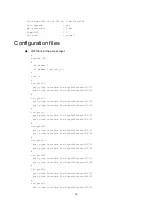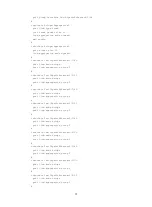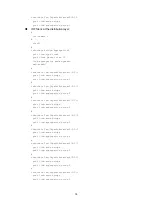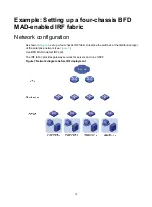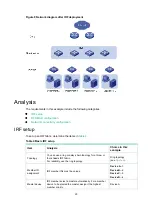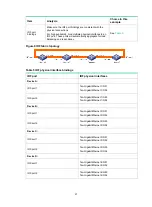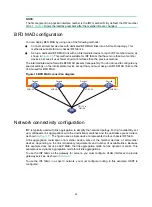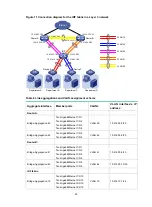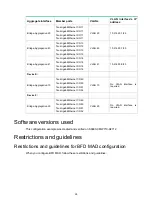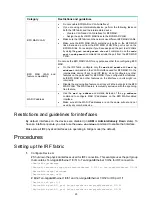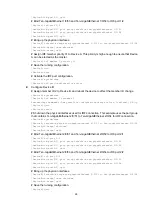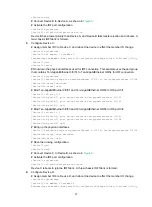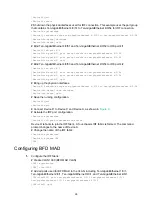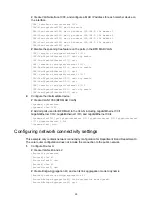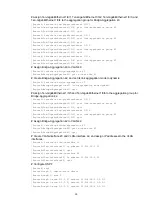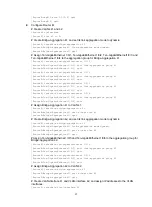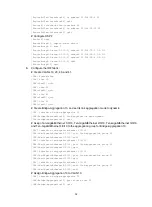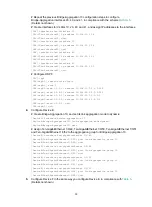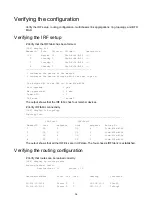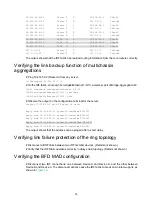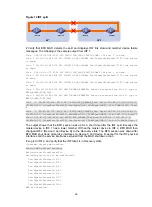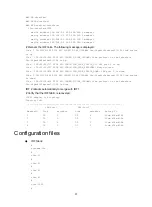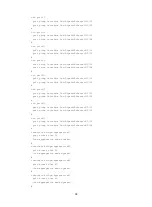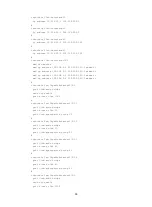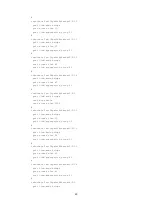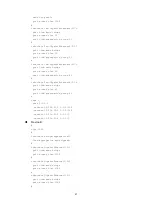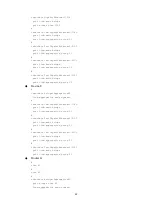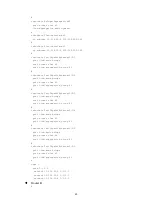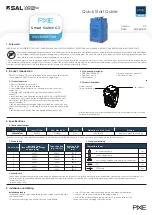
28
[DeviceD] quit
<DeviceD> reboot
# Shut down the physical interfaces used for IRF connection. This example uses the port group
that contains Ten-GigabitEthernet 4/0/51 to Ten-GigabitEthernet 4/0/54 for IRF connection.
<DeviceD> system-view
[DeviceD] interface range ten-gigabitethernet 4/0/51 to ten-gigabitethernet 4/0/54
[DeviceD-if-range] shutdown
[DeviceD-if-range] quit
# Bind Ten-GigabitEthernet 4/0/51 and Ten-GigabitEthernet 4/0/52 to IRF-port 4/1.
[DeviceD] irf-port 4/1
[DeviceD-irf-port4/1] port group interface ten-gigabitethernet 4/0/51
[DeviceD-irf-port4/1] port group interface ten-gigabitethernet 4/0/52
[DeviceD-irf-port4/1] quit
# Bind Ten-GigabitEthernet 4/0/53 and Ten-GigabitEthernet 4/0/54 to IRF-port 4/2.
[DeviceD] irf-port 4/2
[DeviceD-irf-port4/2] port group interface ten-gigabitethernet 4/0/53
[DeviceD-irf-port4/2] port group interface ten-gigabitethernet 4/0/54
[DeviceD-irf-port4/2] quit
# Bring up the physical interfaces.
[DeviceD] interface range ten-gigabitethernet 4/0/51 to ten-gigabitethernet 4/0/54
[DeviceD-if-range] undo shutdown
[DeviceD-if-range] quit
# Save the running configuration.
[DeviceD] quit
<DeviceD> save
# Connect Device D to Device C and Device A, as shown in
# Activate the IRF port configuration.
<DeviceD> system-view
[DeviceD] irf-port-configuration active
Device D reboots to join the IRF fabric. A four-chassis IRF fabric is formed. The command
prompt changes to the name of Device A.
# Change the name of the IRF fabric.
<DeviceA> system-view
[DeviceA] sysname IRF
[IRF]
Configuring BFD MAD
1.
Configure the IRF fabric:
# Create VLAN 1000 (BFD MAD VLAN).
<IRF> system-view
[IRF] vlan 1000
# Add all ports used for BFD MAD to the VLAN, including Ten-GigabitEthernet 1/0/1,
Ten-GigabitEthernet 2/0/1, Ten-GigabitEthernet 3/0/1, and Ten-GigabitEthernet 4/0/1.
[IRF-vlan1000] port ten-gigabitethernet 1/0/1 ten-gigabitethernet 2/0/1
ten-gigabitethernet 3/0/1 ten-gigabitethernet 4/0/1
[IRF-vlan3] quit



